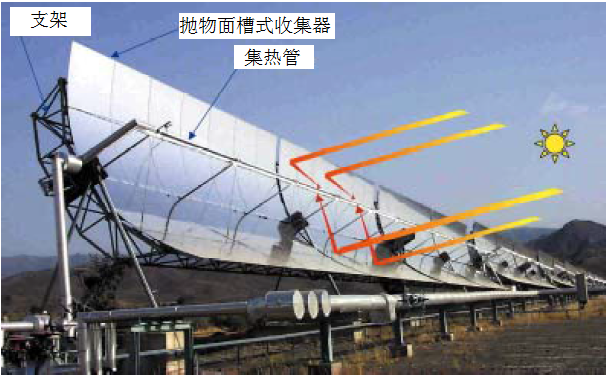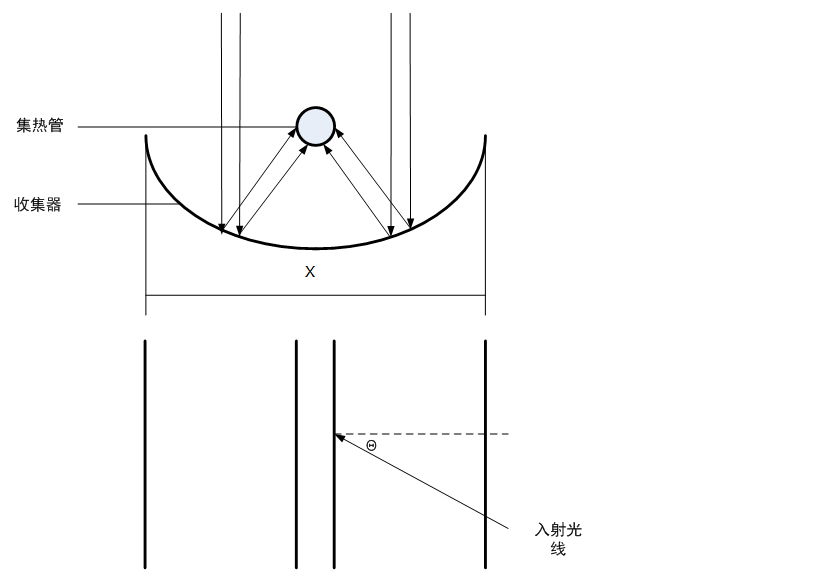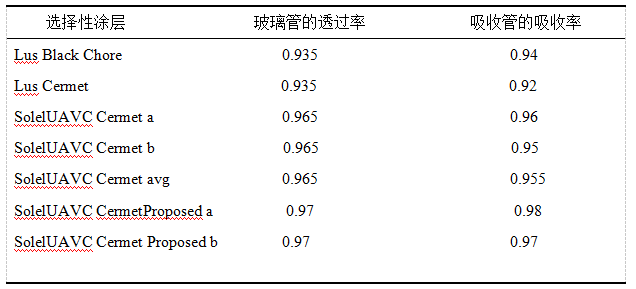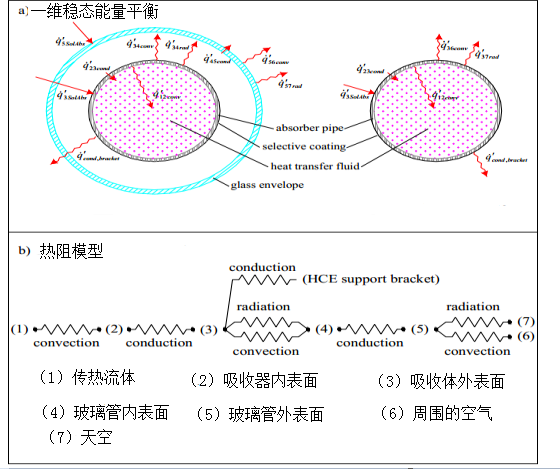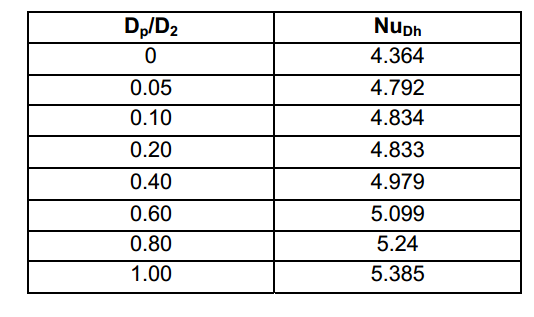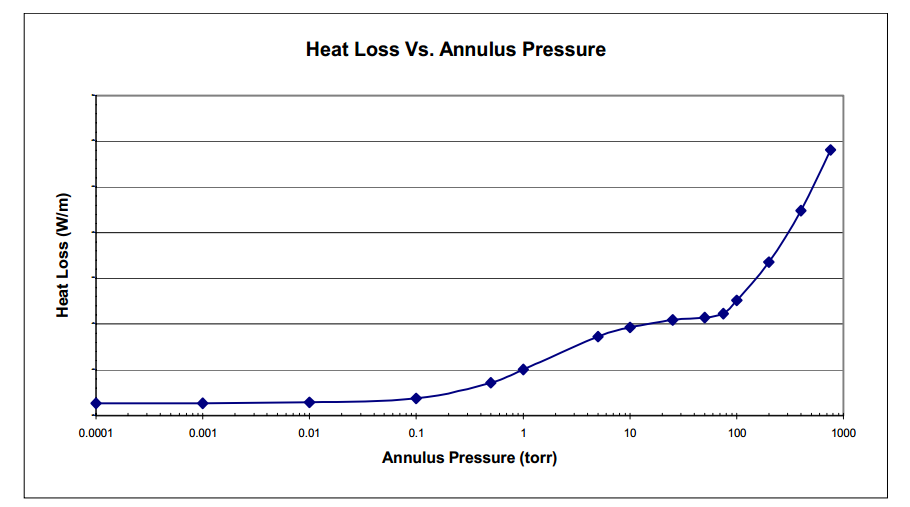槽式太阳能聚热器热性能分析模型与仿真毕业论文
2020-04-12 16:37:01
摘 要
通过槽式太阳能聚光集热器跟踪太阳 ,使得太阳光笔直的入射到聚光器上 ,然后通过聚光器反射太阳光到集热器表面,从而加热集热器内的传热流体,进而参与热力发电的系统为槽式太阳能热发电系统。这种系统一般由五部分组成:有槽式太阳能聚光器、集热器、传热流体、蒸汽发生器和汽轮发电机组等。而其中槽式太阳能集热器是槽式太阳能热发电技术中的最为关键的一个组成部分 ,因此建立槽式聚光太阳能热发电系统的传热模型,从理论上研究系统的结构参数和导热介质特性对太阳能收集效率的影响,具有十分重要的意义。
本文的研究内容为建立槽式太阳能聚光集热器的热性能模型,通过对模型的结果分析有无玻璃管的集热器的热性能。第一章从目前能源的现状介绍到了槽式太阳能技术,然后引入了槽式太阳能技术的现状。第二章通过对现状的分析发现建立有无玻璃管的集热器模型对于研究槽式太阳能聚热器热性能具有十分重大的帮助,建立了相应的模型。第三章对模型进行了仿真求解。第四章对仿真的结果进行了分析。
关键词 : 数学模型;工程方程求解器;槽式太阳能聚光集热器;集热器效率;仿真
Abstract
Trough solar thermal power generation technology is a technology that converts solar energy into heat energy to generate electricity.The trough solar thermal power generation system tracks the sun through a trough solar concentrating collector, so that the solar light is incident on the condenser directly and then reflects the sunlight to the surface of the collector through the concentrator, thereby heating the collector. The heat transfer fluid inside, and further participate in the thermal power generation system.Trough solar thermal power generation systems generally include trough solar concentrators, collectors, heat transfer fluids, steam generators, and turbine generator sets. Because the trough solar collector is the core component of the trough solar thermal power generation technology, a heat transfer model of the trough concentrating solar thermal power generation system is established. The structural parameters and the heat transfer medium characteristics of the system are theoretically studied for solar energy collection. The impact of efficiency is of great significance.
In this paper, the solar energy collected by the trough solar collector is firstly analyzed. Then, the thermal performance of the double-layer collector with glass tube and the single-layer collector without glass tube is analyzed and established. Mathematical heat transfer model is simulated; then, the single-layer and double-layer heat collectors are programmed using the engineering equation solver (EES); finally, the solar irradiation intensity, solar incident angle and heat transfer are calculated and studied. The effect of fluid average temperature on the performance of both collectors. The simulation results show that with the increase of sunlight intensity, the collector efficiency increases significantly. With the increase of incident angle of sunlight, the average temperature of the heat transfer fluid increases, and the efficiency of the collector continues to decrease. By comparing the heat loss and efficiency of the two collectors, it is shown that the performance of the double-layer collector is better than that of a single-layer collector.
Keywords: Mathematical model; Engineering equation solver; Trough solar collectors; Collector efficiency; Simulation
目 录
摘 要 1
目 录 3
第一章 绪论 5
1.1 现代太阳能技术 5
1.2 太阳能光热发电技术 5
1.3 槽式太阳能聚光集热器 6
1.4 论文的研究内容及原因 8
1.5 EES的优点 8
第二章 集热器性能模型的建立 9
2.1 聚光器接收的太阳能量 9
2.2 集热器吸收的太阳能量 10
2.2.1 玻璃管接收的太阳能量 10
2.2.2选择性涂层吸收的太阳能量 11
2.2.3 传热流体吸收的太阳能量 11
2.3 一维能量平衡模型 12
2.4 带玻璃管集热器的能量平衡模型 14
2.4.1 传热流体和吸收器之间的对流换热 14
2.4.1.1湍流过渡流 14
2.4.1.2 层流情况 15
2.4.1.3 环空流动情况 15
2.4.2 通过吸收器壁的热传导 16
2.4.3从吸收器到玻璃管的传热 16
2.4.3.1对流换热 16
2.4.3.1.1真空环 17
2.4.3.1.2压力环 18
2.4.3.2辐射传热 18
2.4.4通过玻璃管的传导传热 19
2.4.5从玻璃管到大气的传热 19
2.4.5.1对流换热 19
2.4.5.1.1没有风的情况 19
2.4.5.1.2有风情况 20
2.4.5.2辐射传热 21
2.4.6吸收管支架处的热传导 21
2.5不带玻璃管集热器的能量平衡模型 22
2.5.1传热流体和吸收管之间的对流传热 22
2.5.1.1湍流过渡流 22
2.5.1.2 层流情况 23
2.5.1.3 环空流动情况 23
2.5.2 通过吸收器壁的热传导 24
2.5.3.1对流换热 25
2.5.3.1.1没有风的情况下 25
2.5.3.1.2有风情况 26
2.5.3.2辐射传热 26
2.5.4吸收管支架处的热传导 26
2.6集热器的热量损失 27
2.7集热器的效率 27
第三章 模型求解 28
3.1 EES界面 28
3.2 模型的求解 31
第四章 仿真结果分析 33
4.1 温度分布 33
4.2 带玻璃管的集热器的热性能 33
4.2.1传热流体温度对集热器热性能的影响 33
4.2.2光照强度对集热器热性能的影响 34
4.2.3 太阳光入射角度对集热器效率的影响 35
4.3不带玻璃管的集热器的热性能 36
4.3.1传热流体温度对集热器热性能的影响 36
4.3.2光照强度对集热器热性能的影响 36
4.3.3入射角度对集热器效率的影响 38
4.4 有无玻璃管的集热器的热性能比较 38
4.5 本章小结 39
第五章 总结 40
致 谢 41
第一章 绪论
随着人们生活水平的日益提高,我们对能量的需求也在提高,而我们地球上化石能源是有一定限量的,所以,我们开始寻找各种新能源。在各种新能源中,太阳能具有十分巨大的优势,比如说太阳能清洁,环保,无污染,利用价值高等,而且太阳能在我们看来更是没有耗尽的机会,所以其种种优点决定了它在新能源中的的有力地位。它有三种主要的利用方式:光热转换、光电转换和光化学转换 。这三种中使用的较多的是光热转换[1]。实际上风能,化学能,水的势能等各种由太阳能直接或间接转化成的能量形式,都可以说成太阳能。而我们对太阳能的利用大多为:太阳能电池——通过光电转换技术把太阳光中包含的能量转化为电能;太阳能热水器——利用太阳光的热量加热水,也可以利用热水发电等。这些都停留在较初级的阶段。因此,为实现我们国家能源可持续发展,开发太阳能更深层次的利用技术 ,使其在我国能源结构中的比重得到提高,是非常有意义的。
现代太阳能技术
随着人们对新能源的各种需求,太阳能以十分巨大的优势:清洁,环保,无污染,利用价值高等,逐渐进入我们的视野。实际上我们所说的太阳能一般情况下是指太阳光的各种辐射能量。它的主要利用形式有三种:包括光热转换、光电转换和光化学转换。它的主要利用方法有有以下两种:太阳能电池——通过光电转换把太阳光中包含的各种辐射能量转化电能;太阳能热水器——利用太阳光的热量来加热水并发电等。
太阳能光热发电技术
太阳能光热发电技术已经使用了100多年。最初,太阳能光热发电技术用于小规模太阳能热机械应用,输出功率为100千瓦,主要用于抽水。只有在1973年的能源危机之后,大型太阳能发电厂的想法才得以实现。从20世纪80年代末开始,在加利福尼亚州南部的莫哈韦沙漠首次建成并运行了9个太阳能发电系统。如图这些太阳能发电系统的规模从30兆瓦到80兆瓦不等,他们为超过30万居民提供足够的电力,每年取代200多万桶石油。
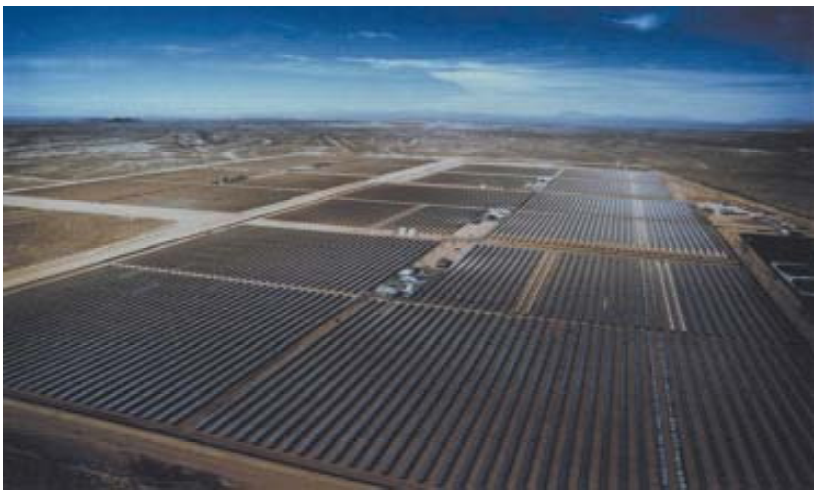
以上是毕业论文大纲或资料介绍,该课题完整毕业论文、开题报告、任务书、程序设计、图纸设计等资料请添加微信获取,微信号:bysjorg。
相关图片展示:
